Jun 3, 2025 11:25 AM
In Memoriam: Al Foster, 1943–2025
Al Foster, a drummer regarded for his fluency across the bebop, post-bop and funk/fusion lineages of jazz, died May 28…
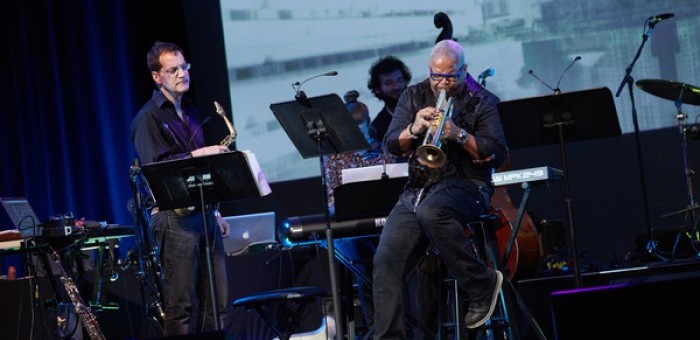
Neil Leonard (left) and Terence Blanchard (right, foreground) perform during the “Wired for Jazz” student showcase at Berklee College of Music in Boston on April 21.
(Photo: Dave Green)The mood was subdued inside Boston’s sparsely populated Berklee Performance Center on April 21, that day having brought the stunning news that pop icon Prince had died at age 57.
That night’s concert, “Wired for Jazz: An Exploration of Jazz & Electronics,” was part of the Berklee College of Music’s four-day State of Jazz Composition Symposium and Concert Series, which debuted two years ago and appears to be shaping up as a biennial event. This year’s panelists and performers included Terence Blanchard, Darcy James Argue, Billy Childs, Samuel Torres, John Clayton and Andy Milne.
Blanchard and Berklee professor Neil Leonard headlined the “Wired for Jazz” set, joined by students from the college’s Electronic Production and Design and Jazz Composition departments. The music for this unique program had been fleshed out in workshops over the previous couple of days.
The venue was less than half-full at showtime—and not simply because people were staying home mourning Prince. It was an unusually bountiful night for jazz in Boston—concurrent performances included a tribute to Kenny Wheeler at NEC’s Jordan Hall and David Gilmore leading his all-star band (Yosvany Terry, Luis Perdomo, Ben Williams and Justin Brown) at Scullers, the city’s revered jazz club.
Prince’s “Nothing Compares 2 U” had just played when Leonard introduced the “Wired for Jazz” program, declaring Prince’s work “a testament to what somebody can do starting out with a drum machine and a guitar.”
A trio of students—D’Anthoni Wooten on laptop, Tomoki Sanders (Pharoah’s son) on tenor sax and Volt Jingjit on violin–set the concert’s vibe with their mix of electronics and acoustic instruments and their international roots (the musicians hail from Kansas, Japan and Thailand, respectively). Wooten played chords on his laptop, and accompanying visual images by Berklee alumna Pamela Hersch were projected on a screen behind them.
Blanchard, Leonard, and a core band—keyboardist Rinat Tregerman, bassist Max Ridley and drummer Gregory McRae—came out for the next two pieces, with Michael Bierylo joining them on modular synthesizer on Leonard’s “Reverberations.” The song began slowly, but picked up its tempo and mood when Ridley put down his bow and began briskly walking his bass. Blanchard joined in with trumpet ablaze, and the group suddenly sounded like a straightahead quartet. Leonard took an intriguing, electronics-fueled alto sax solo well into the extended work, and Blanchard soloed repeatedly in what proved the night’s highlight.
The same band was joined by Israeli clarinetist Lee Gilboa, Japanese electronicist Sakura Tsuruta and continuum keyboard player Blake Adelman for their joint composition “Water,” which included solos from the three horns (Leonard blowing straight acoustic alto this time). Blanchard gave everyone an encouraging “thumb’s up” gesture as they left the stage.
Five short student works followed; the first two were composed by guitarist/electronic artist Nikhil Singh of Mumbai, India. Leonard joined Singh on soprano sax on “Limbic,” which primarily featured booming laptop but ended with Singh adding a touch of slide guitar.
Singh’s “Nebulous” paired his laptop with impassioned vocals by Californian Sarathi Garimella. A piece for violin, two laptops and live feedback was followed by two for “laptop with two controllers,” with Adelman and Jonathan Koh of Singapore feeding off each other like traditional musicians on Adelman’s lively “Robot City.”
Blanchard, Leonard, and others trooped back onstage for the closer, McRae’s “The Mountain Goat Stumbles …/BirdNorth,” which found Leonard on bass clarinet and featured a slow, ruminative solo from Blanchard.
Whether the futuristic fare served up at Berklee was more advanced than the decades-old Wheeler compositions performed at NEC that same night is debatable. But “Wired for Jazz” gave a tantalizing taste of what might still be achieved by coupling electronics and
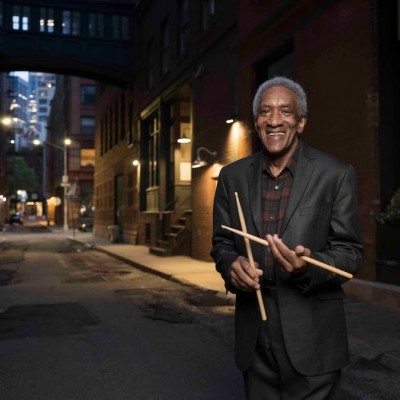
Foster was truly a drummer to the stars, including Miles Davis, Sonny Rollins and Joe Henderson.
Jun 3, 2025 11:25 AM
Al Foster, a drummer regarded for his fluency across the bebop, post-bop and funk/fusion lineages of jazz, died May 28…
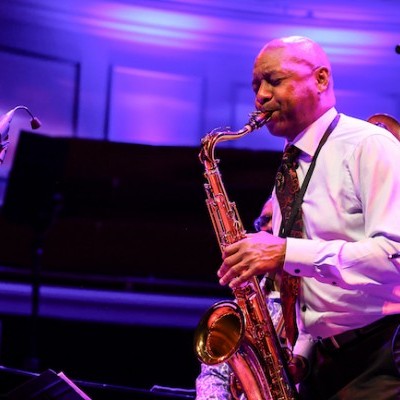
“Branford’s playing has steadily improved,” says younger brother Wynton Marsalis. “He’s just gotten more and more serious.”
May 20, 2025 11:58 AM
Branford Marsalis was on the road again. Coffee cup in hand, the saxophonist — sporting a gray hoodie and a look of…
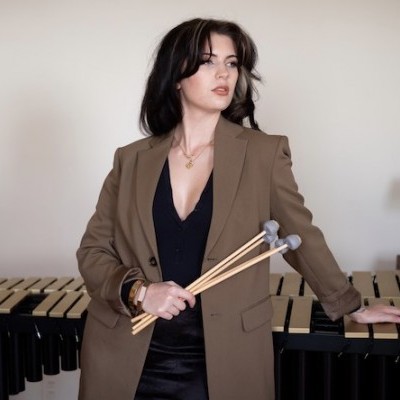
“What did I want more of when I was this age?” Sasha Berliner asks when she’s in her teaching mode.
May 13, 2025 12:39 PM
Part of the jazz vibraphone conversation since her late teens, Sasha Berliner has long come across as a fully formed…

Roscoe Mitchell will receive a Lifetime Achievement award at this year’s Vision Festival.
May 27, 2025 6:21 PM
Arts for Art has announced the full lineup for the 2025 Vision Festival, which will run June 2–7 at Roulette…
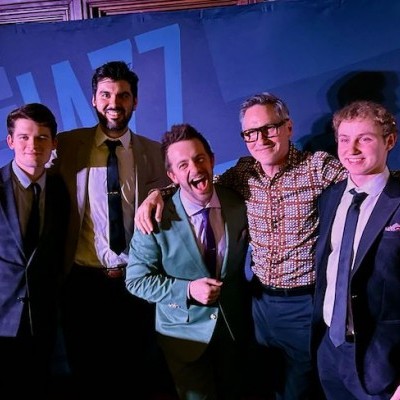
Benny Benack III and his quartet took the Midwest Jazz Collective’s route for a test run this spring.
Jun 3, 2025 10:31 AM
The time and labor required to tour is, for many musicians, daunting at best and prohibitive at worst. It’s hardly…